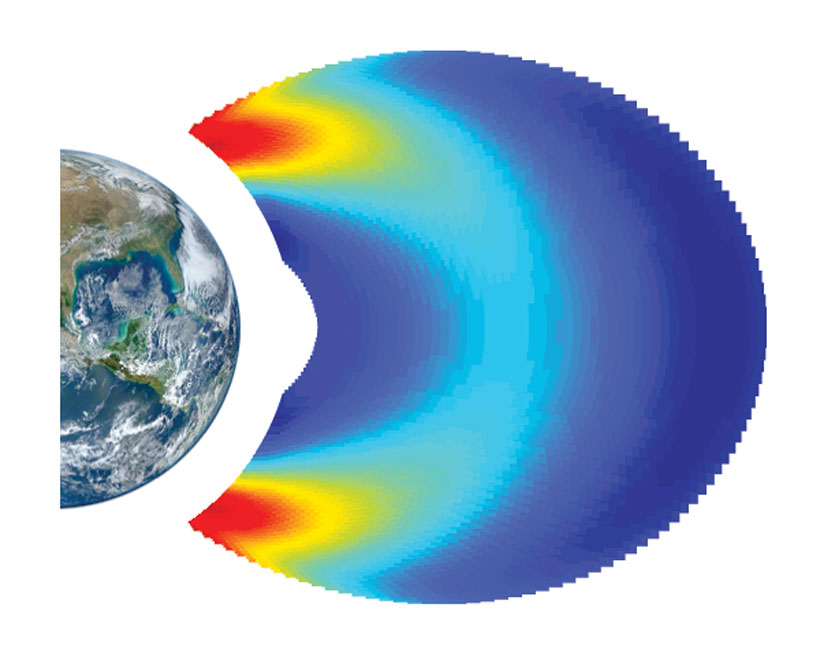A widely used model of Earth’s plasmasphere does not match observations, a new study indicates. Electron density in the plasmasphere—the region of cold, dense plasma that lies above about 1000 kilometers in altitude—plays a key role in space weather and affects how electromagnetic signals propagate.
A theoretical model of the distribution of plasma developed in the early 1960s, known as the diffusive equilibrium model, is still widely in use. However, scientists have noted that the model is based on a number of simplifying assumptions, some of which may not be valid. In addition, it has been difficult to verify the model because it describes the density of electrons along a magnetic field line, and until recently, no such observations were available.
Now, Ozhogin et al. have evaluated the diffusive equilibrium model using data from the Radio Plasma Imager on board the Imager for Magnetopause-to-Aurora Global Exploration (IMAGE) satellite. The data consist of 700 plasmaspheric electron density profiles based on more than 85,000 individual measurements made from June 2000 to July 2005. The authors have found that the model is essentially incompatible with the measurements unless a large number of free parameters are introduced. (10.1002/2014JA019982, 2014)
—Ernie Balcerak, Staff Writer
© 2014. American Geophysical Union. All rights reserved.
© 2014. American Geophysical Union. All rights reserved.

